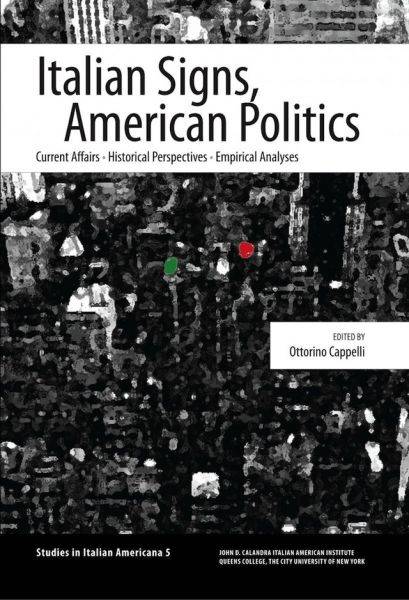How Italian is American Politics?
Here is a much needed collection of multi-disciplinary essays on Italian-American politics from the 1930s to the present. The volume is edited and co-authored by Ottorino Cappelli, an Italian political scientist who is scholar in residence at the John D. Calandra Italian American Institute of CUNY.
Focusing especially on New York, all the authors confront from different angles the same issue: how do we make sense of “all-Italian, intra- ethnic races” such as the New York gubernatorial race of 2010 where both contenders - Andrew Cuomo and Carl Palladino - were of Italian origin?
In the first part of the book (Current Affairs) both sociologist Jerome Krase and political scientist Ottorino Cappelli focus on the 2010 campaign and both conclude that the old days of “ethnic politics”(when politicians appealed mainly to “their own” ethnic fellows for votes) are gone. The impressive success of Italian Americans in all parties depends on their capacity to leave the ethnic getto and represent the American society in all its ethnic, social, and political complexity.
In the second part, historians Stefano Luconi and Salvatore LaGumina explore some famous precedents of the past. Luconi analyzes the congressional races of the 1930s in East Harlem, pitting labour leader and activist Vito Marcantonio against Republican James Lanzetta. LaGumina focuses instead on the New York mayoral race of 1950, when independent Vincent Impellitteri won against two fellow Italian-born candidates: Republican Ed Corsi and Democrat Ferdinand LaPecora.
In the last part of the book, Rodrigo Praino and Ottorino Cappelli explore the relationship between elected officials and their voters at national as well at state level. They find that the Italian-American “political class” does have its power base in the Italian American vote; its continued success, however, depends on its capacity to offer political rather than ethnic representation.
This is the secret of the so-called Italian American “hegemonic districts” where Italian American politicians predominate for decades even though their fellow ethnics continue to decline within the electorate.


































i-Italy
Facebook
Google+
This work may not be reproduced, in whole or in part, without prior written permission.
Questo lavoro non può essere riprodotto, in tutto o in parte, senza permesso scritto.